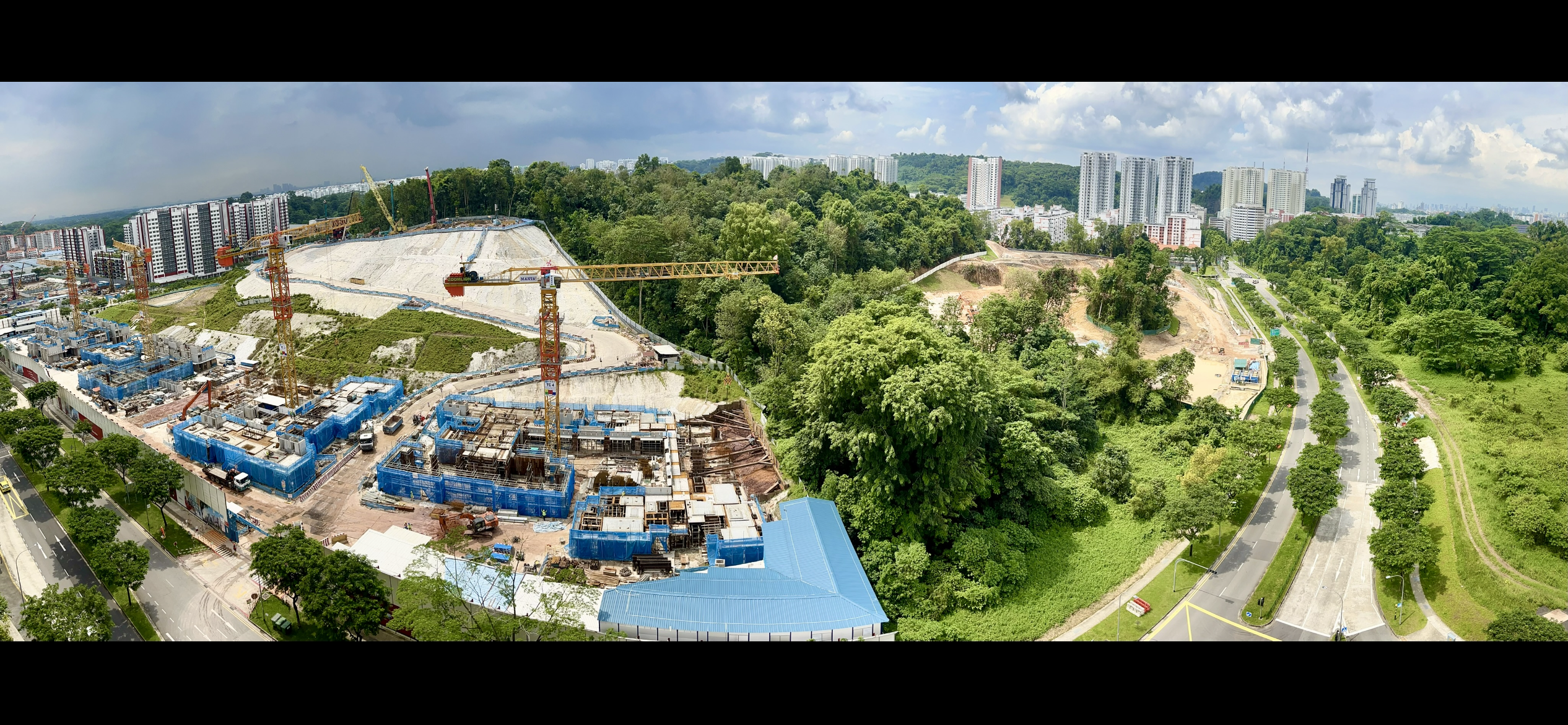
On 17 March 2024, I participated in Deep Time Walk (Asia), a unique event organised by volunteers from environmental non-profit organisations (NGOs), such as SG Climate Rally and Ground-Up Initiative. So, what is Deep Time Walk?
Deep Time Walk is a “transformative journey through 4.6 billion years of Earth history via a 4.6 km guided walk. It is an invitation to view the world differently, encouraging positive action and advocacy for a regenerative Earth.”
I arrived early at daybreak and was greeted by the golden sunrise from a lookout point on Mount Faber. Then I proceeded to join the other participants as the event was about to begin.

After joining our respective teams, we trekked along the 4.6 km route via Henderson Waves, Telok Blangah Hill Park and Alexandra Arch towards HortPark.
At certain junctures, we paused to ponder over certain Deep Time Walk discussion topics. Here are some brief notes I took along the way.
1. Birth of the universe: From chaos to new life (eg condensation to form clouds).

2. Formation of planet Earth: Analogy to the seasons of life (eg career shift).
3. Conditions became suitable for life: Why water is important (detoxify, etc).

4. The first lifeform on Earth: How does knowing that we all share a common ancestor (Luka) play a part in our responsibility towards sustainability? (Any alternative paradigm for us to see ourselves as part of Nature and be stewards of the environment) shift from anthropogenic to cosmo-centric perspective; Ubuntu – “I am because you are”. English – collection of nouns (items). Indigenous languages – communion (verbs).

5. First continent (land mass) emerged: What provides grounding for stability in personal life?
6. Circular economy – waste and resource recycling: Examples?
7. Earth transiting from the snowball stage to interglacial stage to hothouse stage – learning to pause instead of autopilot.
8. Collaboration and networking rather than competition – eg spiders, pets, etc.
9. Cyanobacteria etc forming more multicellular organisms: Silent mindful walk

10. More oxygen, etc: what would you like to birth?
11. Evolution – collaboration?
12. Symbiosis – eg plant and fungi form mycelium network.
13. Sixth mass extinction looming – given that the Earth is warming 100 times faster since the Industrial Revolution 250 years ago.
14. Evolution of flowering plants and pollinators. Separation of South America and Africa etc through the process of plate tectonics.
15. Meteorite collision – extinction of dinosaurs.
16. One million years or so later. Homo sapiens. Agriculture. Industrial Revolution.
During the final sharing session at the end of our journey at HortPark, I learnt that though Singapore contributes only 0.11 percent of the global carbon emissions, Singapore is ranked 8th in terms of carbon emissions per capita, and 27th in terms of the total carbon emissions in the world.

Around this time, I have read the news that the forest around Gillman Barracks in the vicinity of Telok Blangah hill park has been announced that it may be cleared for housing development, which raises concerns among nature and heritage conservationists.
I also learnt that heritage and environmental studies that will inform any future development are slated to start in the second quarter of 2024 and be completed in the first half of 2026.

Incidentally, I have observed some wildlife in this area during the Deep Time Walk, and heard the unmistakable melodious songs of a critically endangered straw-headed bulbul at the elevated walkway near Alexandra Arch.

On 18 May 2024, I decided to recce Forest Walk around Gillman Barracks Forest and was fortunate to spot some charismatic native creatures, such as a scarlet-backed flowerpecker and a rare oriental pied hornbill.


I also noted that a sizeable portion of the steep slope along the southern flank of Telok Blangah hill park has experienced slope failure some time early last year, which prompted the authorities to close the eastern part of the elevated walkway for public safety and for slope repair works to be done.



Considering the hilly terrain in this area, I am concerned that any removal of natural vegetation in Gillman Forest for development will inevitably result in soil erosion, siltation of waterways (which flow towards Labrador nature reserve and Berlayer Creek), and/or even landslides.






P.S. To support the petition to preserve Gillman Barracks and surrounding Hill Forest, click here.

Leave a comment